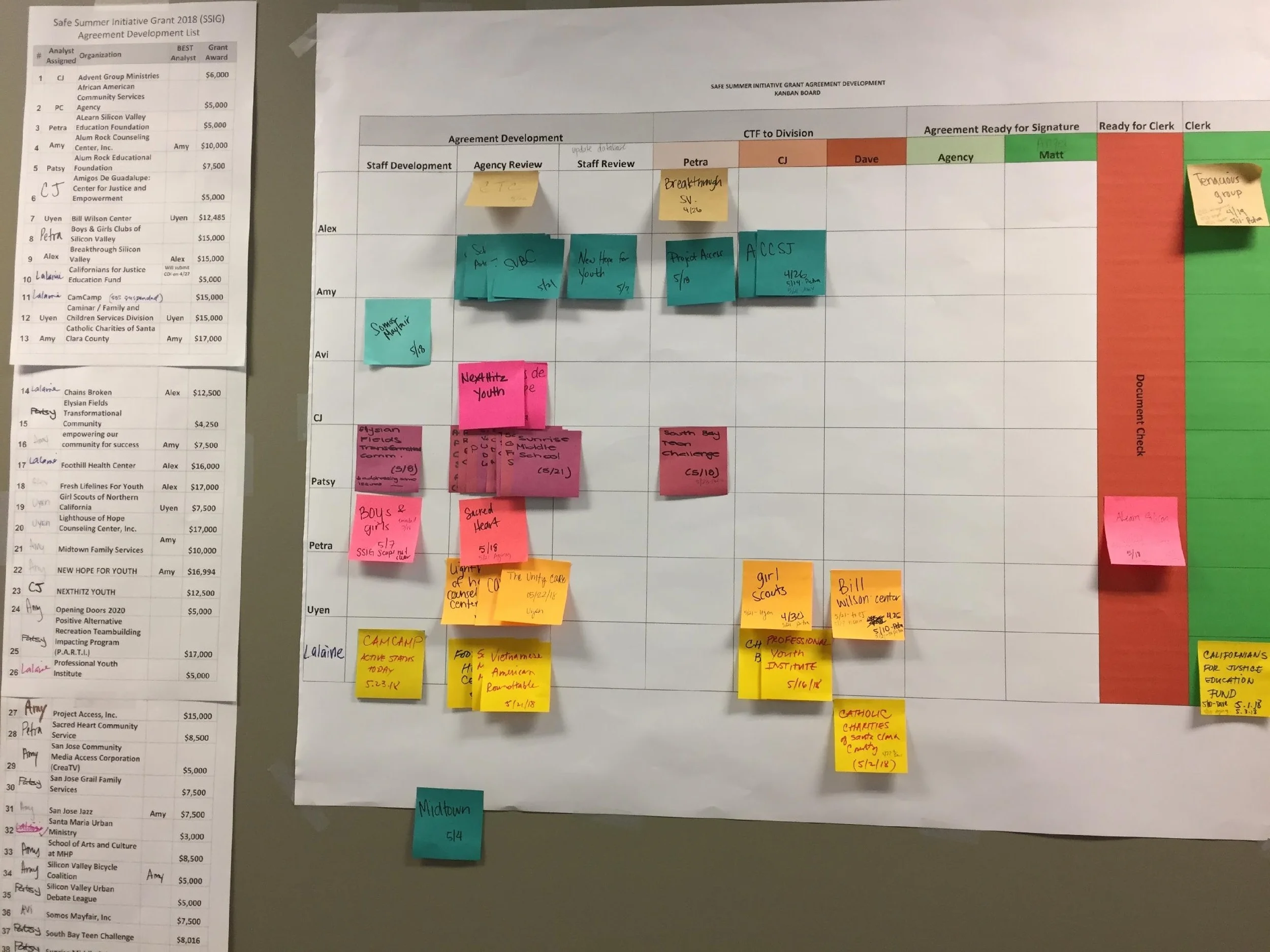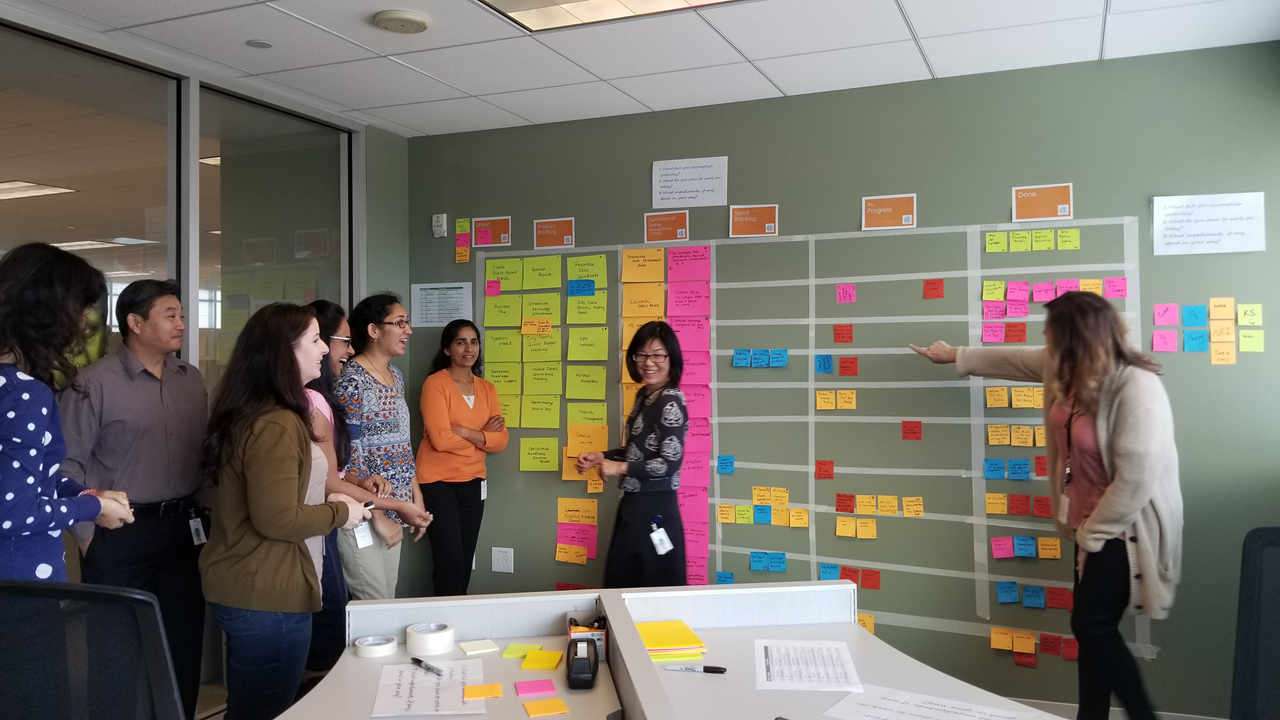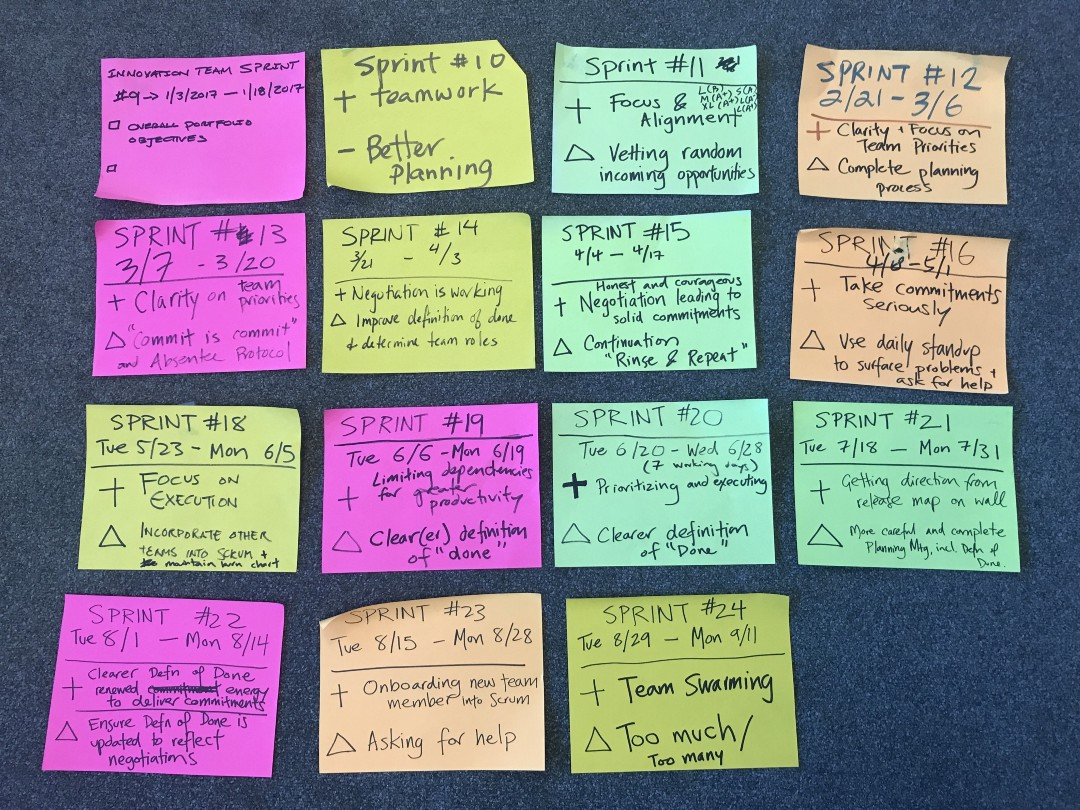What are the best ways for governments to improve effectiveness and efficiency? At San Jose City Hall, we’re getting traction with an unconventional approach: agile for non-technical teams. Public servants who do everything from emergency management to parks programs are finding that Agile methods help them with that most basic of challenges: Getting things done amid frequent interruptions and evolving priorities.
Last September, I proclaimed, "Scrum is the best thing that’s happened to our government team." Our innovation team of five had discovered that planning and delivering work in small increments enables us to stay focused, aligned, and continuously improving. We didn’t yet know if our experience would be replicable by other teams in our organization. We offered Agile training for 10 colleagues to see what would happen.
Nine months later, 12 teams and more than 100 staff members throughout our organization are using Agile methods to organize their work. Notably, the spread of Agile among city teams has been largely organic, not driven by top-down mandates.
What is Agile?
Agile is a way of organizing teams to work in an iterative, incremental, and highly collaborative manner. There are many different forms of Agile, but two of the most common are Kanban and Scrum. While Kanban is a lightweight framework that focuses on visualizing tasks on a board (physical or digital), Scrum is more prescriptive and complex, with specific roles, meetings, and time-boxed sprints. Both Kanban and Scrum place value in responding to change over following a plan, continuously improving process, and giving the team autonomy to determine how the work gets done.
While there are many variations on Agile methods, here are some aspects that are common among our teams in the City of San Jose:
-
The team maintains a list of all potential tasks, known as a "backlog"
-
Tasks are not worked on until explicitly prioritized
-
Work is made visible by tracking tasks on public boards
-
Team conducts regular check-in meetings
-
Team conducts regular "retrospective" meetings to identify on what’s working well and what needs improvement
While Agile originally developed in the manufacturing industry and became well-known as a software development framework, it has been adapted to other sectors, including government.
Why city leaders are choosing Agile
Of the dozen teams using Agile in the City of San Jose, almost none are delivering software, and almost none had heard of Agile a year ago.
Why did these teams decide to go Agile? Here are the top reasons we hear from internal Agile champions.
Aligning as a team. When Ramses Madou began managing the City of San Jose’s transportation planning group, he saw a need to align the contributions of his talented team members into a coherent effort that advanced the department’s overall priorities. Before implementing Scrum, he says, "Everyone was running on their own track."
Focus on priorities. After the launch of a new grant program, San Jose’s Parks, Recreation and Neighborhood Services department suddenly found itself with 47 contracts to process in six weeks. To help the team get a handle on the work, program manager CJ Ryan enlisted our resident Agile coach Alvina Nishimoto to guide the team in setting up a Kanban board to visually track the contracts. After two weeks, CJ could see that the team was not progressing as quickly as needed, so she decided she needed a 100% focus. She blocked off her team’s calendar for two full days and gave them air cover to ignore other demands on their time. Without constant interruptions, her team got through 25 drafts contracts in just two days.

Team Kanban board for tracking contracts (Photo credit: Alvina Nishimoto)
Manage interruptions. The web team for San Jose Public Library receives a constant flow of requests from other library divisions, which makes it difficult for the team to make progress on important longer-term projects. When the team implemented Scrum, the team’s manager and "product owner" Laurie Willis became the filter for all requests, ensuring that they would be worked on only after being prioritized for a given sprint. Team member Stacy Tomaszewski immediately started feeling the benefit of not being pressured to respond immediately: "We feel like we can say no." And in government, where everything feels like a priority, the ability to say "wait until our next sprint" can be very powerful indeed.

Daily stand-up meetings allow team members to share progress. (Photo credit: Andrea Truong)
5 tips for getting started
Start with the basics: Make work visible. Transparency is one of the first benefits experienced by most teams in our organization. To get started, all you really need is to put prioritized tasks up in one place where you can progress from "backlog" to "work in progress" to "done." Team members benefit from having a visual reminder of their priorities and getting to share their progress with the team. Managers and stakeholders get more visibility into work underway. We recommend starting with a simple, lightweight system. If your team is co-located, it’s hard to beat a physical board in terms of a visual reminder. Most San Jose teams still use sticky notes to track tasks. A few teams use Trello or other digital tools and have successfully gotten team members in the habit of checking and updating Trello regularly.

A record of "pluses" and "deltas" shows what worked and what to be improved from 15 sprints over 8 months. (Photo credit: Michelle Thong)
Iterate and improve over time. Continuous, incremental improvement is the real secret to the power of Agile. All of San Jose’s teams do regular retrospectives to reflect on what’s working and what needs to be improved. This process empowers your team to make Agile work for them and overcomes resistance by allowing the team to drive small experiments that add up over time. CJ Ryan’s team in the Parks department initially resisted the idea of daily stand-ups, and she decided not to push them. Instead, the team started with a simple Kanban board. After a while, the team decided that daily stand-up meetings would be useful so they could share progress at a finer-grained level. Next, they decided to start regular planning meetings as a team to establish priorities. Effectively, the team has evolved to adopt many "Scrum-like" practices, but at a pace that makes sense to them.
Get some expert help to take it to the next level. While it’s easy enough to start adopting Agile practices you read about online, troubleshooting can be hard if your peers and team don’t have prior experience with Agile in a range of contexts. We’ve found it critical to have the wisdom of an experienced "Agile coach" to support teams, provide guidance, and offer spot training and coaching. We found both our coaches through the Encore fellow program, but you could also hire an Agile consultant or perhaps find pro bono volunteers from the private sector.
Be patient. Agile helps teams to establish productive habits like prioritizing, asking for help, and reflecting. But Agile is not a magic bullet—it won’t solve all your problems overnight. In fact, it may even make some of your problems more apparent. Give yourself time to figure out how to make the process work for your team.
And finally, have fun with it. A big benefit of Agile is that it builds connections among team members, enabling deeper collaboration and greater effectiveness as a team. So don’t be too serious about it. Instead, experiment with creative ways to make Agile an enjoyable and integral part of your team culture.
Let us know what you learn along the way.







5 Comments